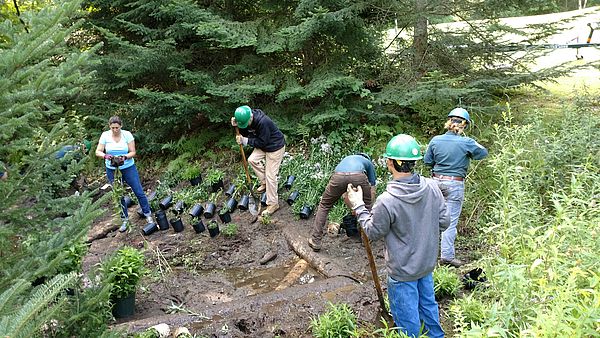The Winooski Natural Resources Conservation District (WNRCD) is pleased to announce the awarding of Lake Champlain Basin Program funds to develop a Watershed Action Plan for Lake Iroquois and the Patrick Brook watershed. WNRCD has partnered with Lake Iroquois Association (LIA) and Lewis Creek Association (LCA) to identify and address priority opportunities that remediate stormwater runoff and phosphorus pollution to improve water quality, wildlife habitat, and climate change resilience.
“This project is a really exciting opportunity to work collaboratively with watershed partners and the public to identify and address a number of the water quality concerns in the Lake Iroquois and Patrick Brook Watershed.” says Remy Crettol, WNRCD District Manager. He continues, “A big priority of ours is to get the public involved. We will have outreach events including public forums and walking tours of LakeWise and Ahead of the Storm properties. Hopefully, this will inspire residents to consider stormwater assessments on their own properties.”
As a popular recreational destination in burgeoning Chittenden County, Lake Iroquois has seen an increase in visitors. A rise in seasonal camp conversions to year-round use, and neighborhood expansion, place high stress on private road systems and increase stormwater, sediment, and phosphorus runoff to the lakes, ponds, and streams (Patrick Brook, which drains into the LaPlatte River and on to Lake Champlain). Currently, the watershed lacks any recent comprehensive analysis of water quality and habitat stressors.
In completing this project, watershed residents will have increased knowledge of their impacts on water and habitat quality. Communities will have improved planning tools and a holistic road map with clearly prioritized projects as a guidepost for design and implementation. Regional partners can then target limited funds toward high priority projects that benefit the watershed and its residents.

